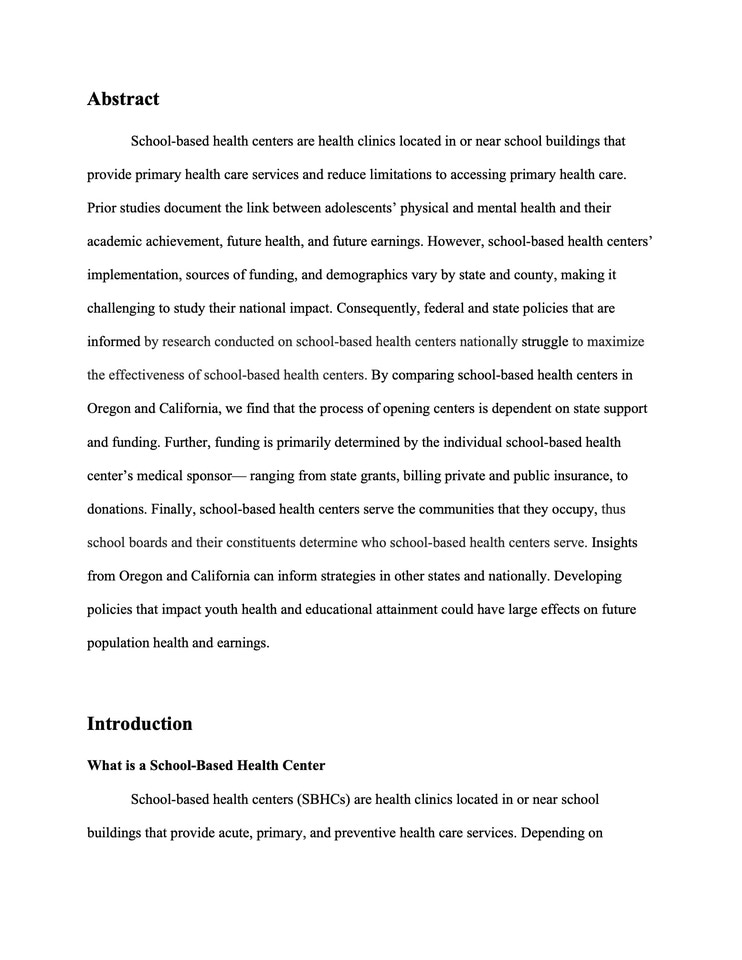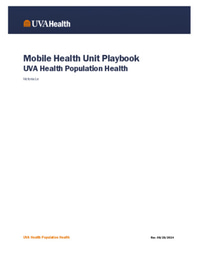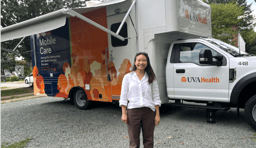Summer One Research Abstract

School-based health centers are health clinics located in or near school buildings that provide primary health care services and reduce limitations to accessing primary health care. Prior studies document the link between adolescents’ physical and mental health and their academic achievement, future health, and future earnings. However, school-based health centers’ implementation, sources of funding, and demographics vary by state and county, making it challenging to study their national impact. Consequently, federal and state policies that are informed by research conducted on school-based health centers nationally struggle to maximize the effectiveness of school-based health centers. By comparing school-based health centers in Oregon and California, we find that the process of opening centers is dependent on state support and funding. Further, funding is primarily determined by the individual school-based health center’s medical sponsor— ranging from state grants, billing private and public insurance, to donations. Finally, school-based health centers serve the communities that they occupy, thus school boards and their constituents determine who school-based health centers serve. Insights from Oregon and California can inform strategies in other states and nationally. Developing policies that impact youth health and educational attainment could have large effects on future population health and earnings.




Please sign in
If you are a registered user on Laidlaw Scholars Network, please sign in